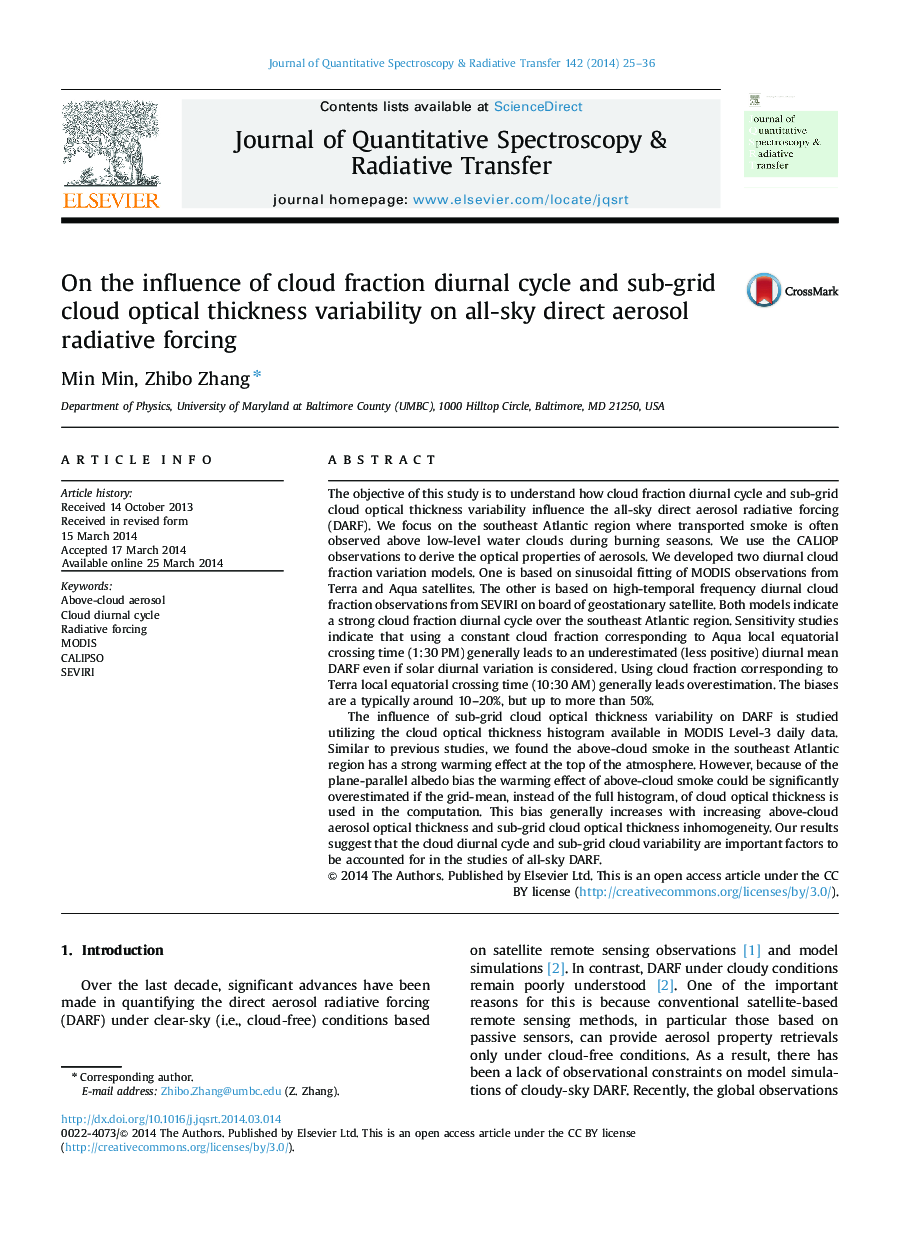| کد مقاله | کد نشریه | سال انتشار | مقاله انگلیسی | نسخه تمام متن |
|---|---|---|---|---|
| 5428417 | 1508673 | 2014 | 12 صفحه PDF | دانلود رایگان |
- Cloud diurnal cycle strongly influences all-sky direct aerosol radiative forcing (DARF).
- Constant cloud fraction assumption may lead to biased diurnal mean all-sky DARF.
- Plane-parallel-albedo bias applies to cloudy-sky aerosol DARF computation.
The objective of this study is to understand how cloud fraction diurnal cycle and sub-grid cloud optical thickness variability influence the all-sky direct aerosol radiative forcing (DARF). We focus on the southeast Atlantic region where transported smoke is often observed above low-level water clouds during burning seasons. We use the CALIOP observations to derive the optical properties of aerosols. We developed two diurnal cloud fraction variation models. One is based on sinusoidal fitting of MODIS observations from Terra and Aqua satellites. The other is based on high-temporal frequency diurnal cloud fraction observations from SEVIRI on board of geostationary satellite. Both models indicate a strong cloud fraction diurnal cycle over the southeast Atlantic region. Sensitivity studies indicate that using a constant cloud fraction corresponding to Aqua local equatorial crossing time (1:30Â PM) generally leads to an underestimated (less positive) diurnal mean DARF even if solar diurnal variation is considered. Using cloud fraction corresponding to Terra local equatorial crossing time (10:30Â AM) generally leads overestimation. The biases are a typically around 10-20%, but up to more than 50%.The influence of sub-grid cloud optical thickness variability on DARF is studied utilizing the cloud optical thickness histogram available in MODIS Level-3 daily data. Similar to previous studies, we found the above-cloud smoke in the southeast Atlantic region has a strong warming effect at the top of the atmosphere. However, because of the plane-parallel albedo bias the warming effect of above-cloud smoke could be significantly overestimated if the grid-mean, instead of the full histogram, of cloud optical thickness is used in the computation. This bias generally increases with increasing above-cloud aerosol optical thickness and sub-grid cloud optical thickness inhomogeneity. Our results suggest that the cloud diurnal cycle and sub-grid cloud variability are important factors to be accounted for in the studies of all-sky DARF.
Journal: Journal of Quantitative Spectroscopy and Radiative Transfer - Volume 142, July 2014, Pages 25-36
